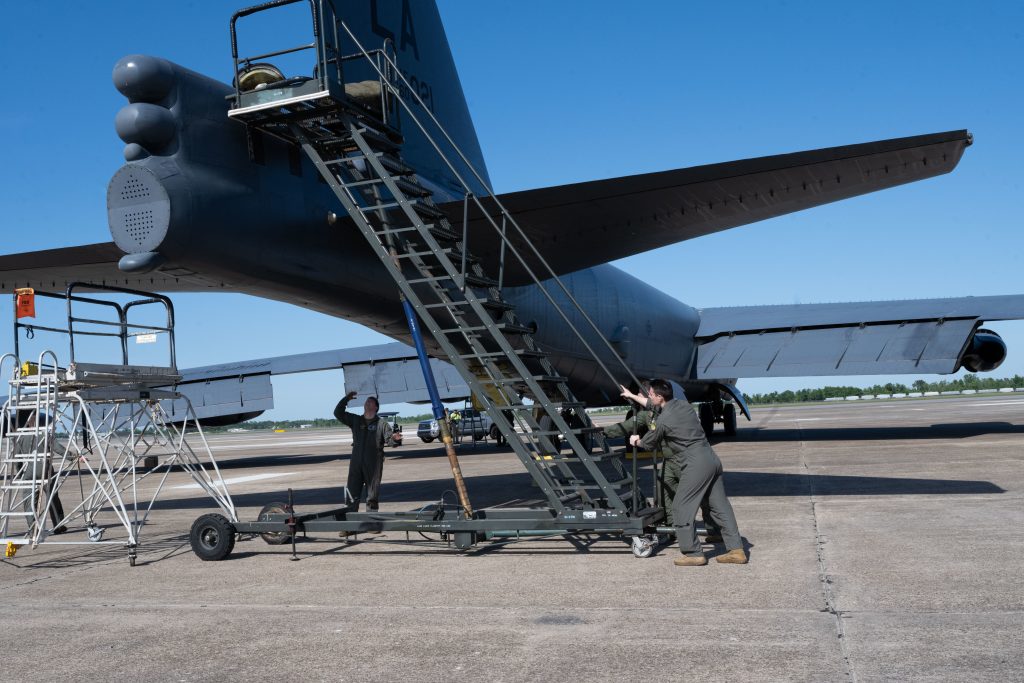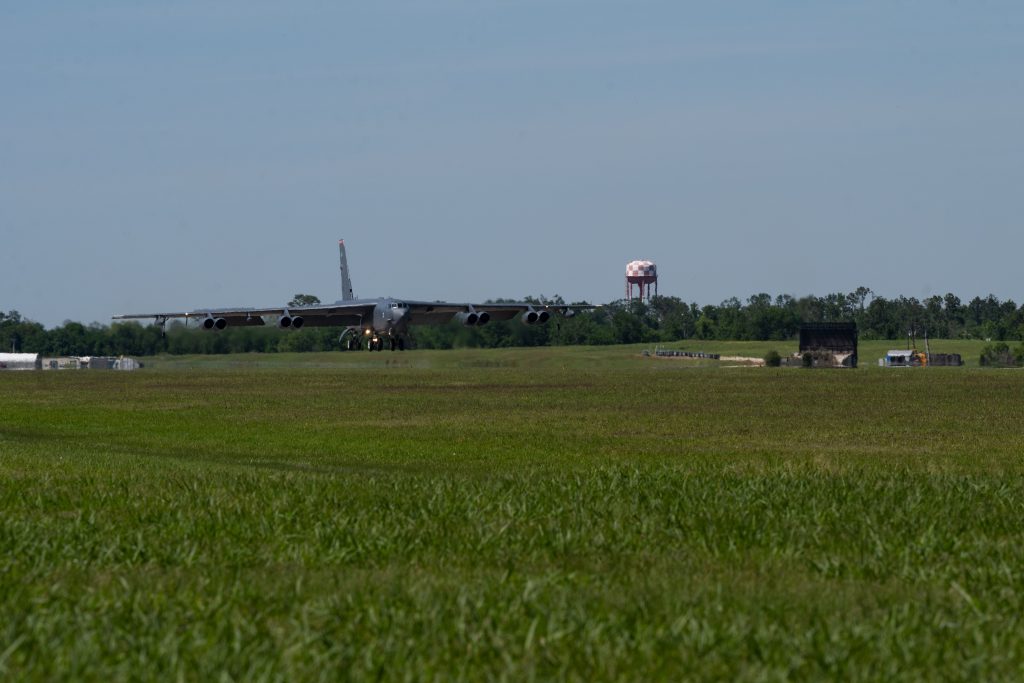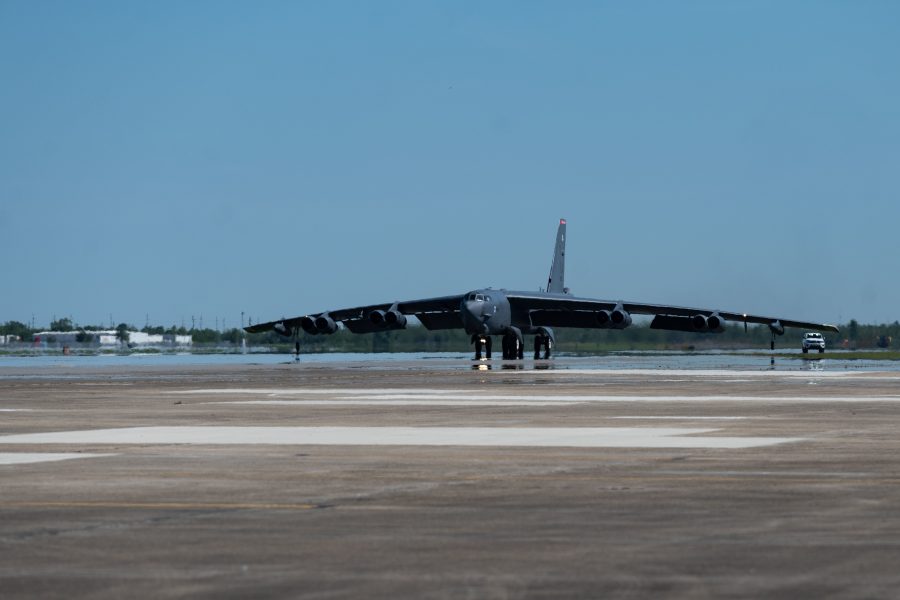Two B-52 bombers made a rare touchdown at a civilian airport earlier this month to practice landing at non-military airfields. The jets, operated by the 20th Bomb Squadron at Barksdale Air Force Base, La., landed at Chennault International Airport, La. on April 12. The airport is about 200 miles south of Barksdale, the home of the 2nd Bomb Wing and Air Force Global Strike Command, which oversees the service’s bombers.
“When it comes to nuclear war, all bets are off and we need to be prepared to adapt to the current situation,” squadron commander Lt. Col. Jared Patterson said in a release. “By demonstrating our ability to land at a civilian airfield, we’re demonstrating our ability to conduct operations.”

The 159-foot-long B-52 requires runways that are long, wide, and strong enough to support its weight, and those are not always found at civilian airports. By landing and taking off from Chennault, the squadron proved it can “land a B-52 anywhere across the globe,” Patterson said.
“Landing B-52s at a civilian airport, like Chennault International Airport, forces Airmen to think differently,” Barksdale spokesperson Capt. Hunter Rininger told Air & Space Forces Magazine. Working at unfamiliar airfields “allows Airmen to practice operations … that are difficult to replicate within the sanctuary of a typical military airfield.”
A spokesperson for Air Force Global Strike Command told Air & Space Forces Magazine that the landing demonstrates Agile Combat Employment, a concept in which small teams of Airmen launch and recover aircraft at remote or austere airfields, then relocate to avoid being targeted by enemy missiles. It also underscored the importance of military-civilian cooperation, said Kevin Melton, executive director of Chennault International Airport.
“The 2nd BW and Chennault International Airport partnership is significant because it provides the wing an alternate location for training and operations,” said Melton.

The landing marked the end of this year’s first iteration of the wing’s Bayou Vigilance exercise, which started on April 3. Held multiple times a year, the exercise gives bomber air and ground crews a chance to practice responding quickly to a crisis.
“This exercise demonstrated the 2nd Bomb Wing’s ability to rapidly mobilize airpower, stand up nuclear security operations when called upon, and execute the alert mission for an extended period of time,” Col. Michael Maginness, 2nd Bomb Wing commander, said in a release. “With every rep, the Wing is laying the groundwork for future capabilities.”
In recent years, the strategic bombers have conducted more landings at other nations’ military airfields, broadening their presence around the globe.


